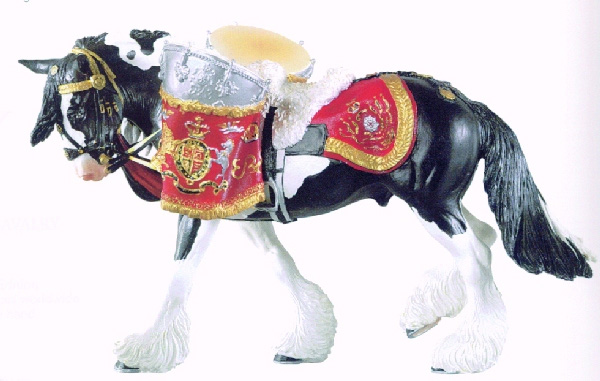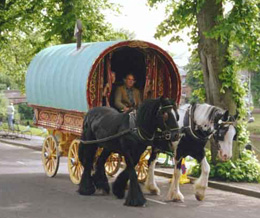| |
|
| |
|
| |
|
| |
|
| |
|
| |
|
| |
| |
Web Site
by
Big Sky Web Design |
|
|
We're sorry, the Stallion Auction has closed for 2005.
Hope to see you in 2006!! |
Welcome to the 2nd annual GCDHA Stallion Service Auction! This exciting event is a great opportunity for mare owners to purchase a discounted breeding to one of the phenomenal stallions registered with the Gypsy Cob And Drum Horse Association. The proceeds of this auction go to support the activities of the association and it's efforts to promote this exciting breed.
Browse through the listing of amazing stallions. If you have any questions please contact the stallion owner directly or email the auction staff. When you are ready to place a bid just click on the link and tell us which stallion you are bidding on.
The following information may help you to understand a bit more about the horses that we are offering. If you have any more questions please visit the association website at www.gcdha.com
|
What is a Drum Horse?
The term Drum Horse is used in Britain to describe the horses that carry a rider and two silver kettle drums during certain Ceremonies of State, processions or exhibitions. Throughout history, the preferred type of horse to perform this job has varied with the era and the regiment it performed with. The one common factor was that they had to be a large, strong horse with an even temperament. The size and strength were required because the combined weight of the drums and rider could easily exceed 300 pounds and an easy disposition because of the parade atmosphere they were often required to perform in. And to make things just a little more difficult, the rider’s hands had to be free to beat the drums, so the reins are attached to the rider’s stirrups.
|
 |
The Drum Horse has captured the breeder's imagination with his stunning good looks and stately air. Often seen as a larger version of the Gypsy Cob, the Drum Horse stands at least 16hh and may utilize the bloodlines of the Clydesdale, Shire, Friesian and Gypsy Cob. It is a heavy horse, pinto colored with lovely feather and exceptional disposition. Developed as a heavy riding horse, the Drum Horse is suited for low level dressage, eventing, hunting, saddle seat, trail, pleasure and, of course, makes an excellent driving horse.
In recent times, many of the Drum Horses have been high colored Clydesdales or horses produced from the crossing of Shires with the older, larger bloodlines of Gypsy Cobs or with Dutch Warmbloods. This is the reason that you will now often see feathered Drum Horses. It is this "type" that inspired the development of the breed known as the Drum Horse.
|
|
What Is A Gypsy Cob?
The Gypsy Cob was developed by the Romany people, or Gypsies (Travellers), of Great Britain and Ireland. They were used to pull the colorful wagons known as the family vardo or caravan. Traveling the roads and often cared for by children, it was essential that the horses were both strong and kind with a willing disposition. They also had to be of a hardy nature, sound and easily kept, as there were no special provisions made for food or shelter. They lived on the vacant land and grass strips found next to the road.
|
 |
The Travellers take great pride in the horses they breed and use themselves. And while many Romany have now settled into more modern housing, you can still find the horse-drawn vardo on the roads, here and there.
With less need for the larger, draft type of horse, the Travellers now prefer a smaller cob or pony type with an active and speedy trot. This smaller version is ideal for the cart racing so loved by the Romany.
The larger cob and horse types are now often used by families as the great all around horse. Many are used as safe and sane mounts for foxhunting and most riding schools and trekking centers use these kind and willing partners.
|
|
|